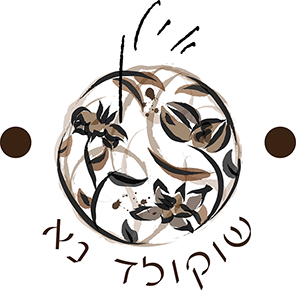Chocolate of the Pacific
Chocolate has travelled the globe but is too often cornered in places like Europe or Latin America. A rich new craft is gaining ground in the Pacific with chocolatiers utilizing the land to create rich new flavor profiles for us to discover. There have been some misconceptions about the quality of cacao grown in the Pacific Island tropical regions and we wanted to highlight some places that warrant a closer look.
Hawai’i
The iconic island chain has had a blossoming chocolate industry over the past few years. More and more entrepreneurs are looking into cultivating this resource that arrived in 1858 from German physician and botanist Dr. William Hillebrand. Starting in just a small plot of land, he began integrating this commodity into the Hawaiian landscape. He chose two criollo varieties to study, one from Mexico and one for the Philippines.
However, it has not been an easy road to travel. There are no native cacao trees in Hawaiian and studies are still being conducted for growth, fertilization, and disease control. To date there are just about 100 acres of cacao growing on the islands of Oahu, the Big Island of Hawaii, Maui, and Kauai, but the demand is growing for quality cacao. And just like wine country, depending on where you go, the chocolate will taste different.
But imagine Hawai’I, the land of the luscious beaches, pineapple plantations, and beautiful tropical forests. That sweet soil will lead to experience what you already know of Hawai’i- sunshine and tropical fruits. The cacao is naturally bright with banana and pineapple notes with finishes of dark cherry, berry, and raisins.
Vietnam
It wasn’t until the 19th century that chocolate was introduced to Vietnam through the efforts of the French. Wanting to copy the works of cacao planting by the Spanish in the Philippines, two French men began the unsuccessful attempts to grow cacao. The trees grown by Dr. Alexandre Yersin didn’t meet the French high standards and so continued farming was abandoned.
The few trees that were left were taken care of by local gardeners and with no ambition to make chocolate from any of the produce. It wasn’t until the 2000s when Vietnam came to the stage as potential contender in the bean to bar industry. Marou, the most well-known and among the first, started with two Frenchman who found an unaddressed cacao plantation in the jungle. With humble beginnings, they are creating a name for Vietnamese chocolate using quality regional ingredients.
The incredible part of Vietnamese chocolate is the dedication of Vietnamese chocolatiers to use locally sourced ingredients in their chocolate production. The boast, and rightly so, is having a chocolate that is 100% Vietnamese. Based on the region, flavors can range from spicy chili to guava or orange peel. It is a unique tropical chocolate that brings bright and spice to the forefront.
Be on the lookout for more award winning chocolate from this region as the chocolate industry is just at its beginning stages.
New Zealand
Without much surprise, New Zealand has a rich history with chocolate due to its connection with Great Britain. In the late 1800s, companies like Cadbury, Nestle, and Whittaker came to the island and built manufacturing plants for chocolate production. Did you know that the famous Christmas-time treat, Queen Anne Chocolates originated in New Zealand? I didn’t think so.
But, why would New Zealand be important now? It seems like their chocolate history is pretty settled. Just like in the United States in at the turn of the 21st century, chocolate makers in New Zealand wanted to do something more. Breaking the mold of the large chocolate machine, the bean-to-bar movement swept through the country and brough some new flavors to big cities and small towns.
Although most cacao is imported to make the award-winning chocolate, the innovation that is being accomplished in New Zealand is reviving the chocolate industry. Gathering quality ingredients in neighboring countries like India, Tanzania, or Vanuatu, rich flavors like malt, caramel, or warm spices are turning our heads and delighting our mouths. We are getting flavors that we aren’t used to and it’s fun to discover.
Fiji
Like Hawai’i we imagine Fiji as a holiday paradise. Fun in the sun all day long with beautiful waves and sandy shores. I don’t think anyone would be on a hunt for chocolate, but it makes the chocolate story that much more rich. Arriving in 1883, cacao seeds from Trinidad arrived by means of the England’s Royal Botanical Garden voyage. Britisth colonists introduced the commodity by planting cacao in Vanua Levu which have survived for the last two hundred years. Most farmers found that cacao was unprofitable and turned their attention to crops like taro.
It wasn’t until the early 2000s that Fijian chocolatiers brushed through the rainforests to cultivate these crops again. With only a few chocolatiers in the country, the goal is not to make Fijian chocolate popular, but to care for the land that is producing cacao. In the heart of the island are cacao plantations that are taking the chocolate making process slowly to make a symphony of flavors from the local cacao. Fijana Cacao, in particular, explains to readers that one piece for their chocolate takes 200 days to produce. The goal is to create a pyramid of flavors, each discovering a new layer of flavor and delight.
The cacao variety growing in Fiji is Trinitario and Forastero (the two most grown varieties in the world), but it is the soil that makes all the difference. Growing up in the shaded rainforests, cacao has an incredibly fruity quality. With an aroma of raisins eventually leading into creamy vanilla, the taste and textures of this chocolate is just being discovered.




